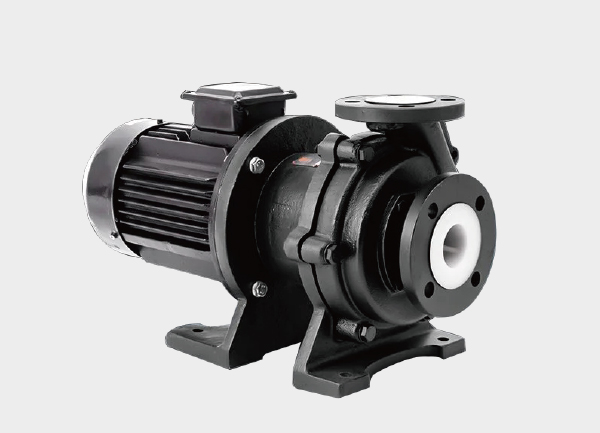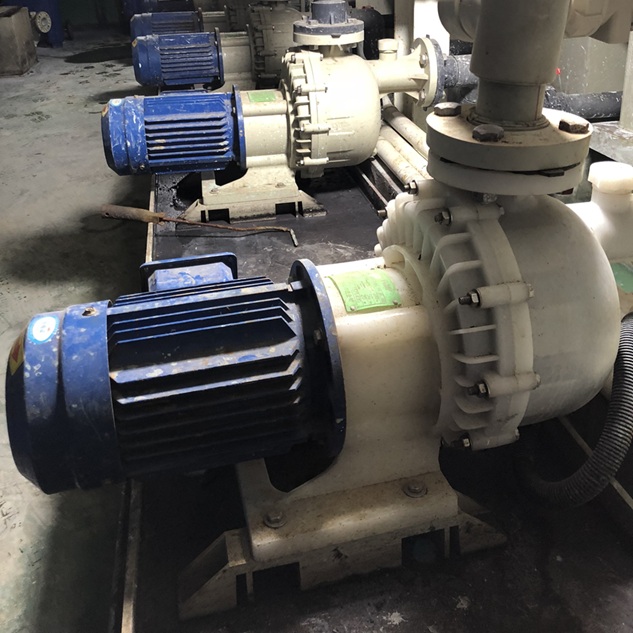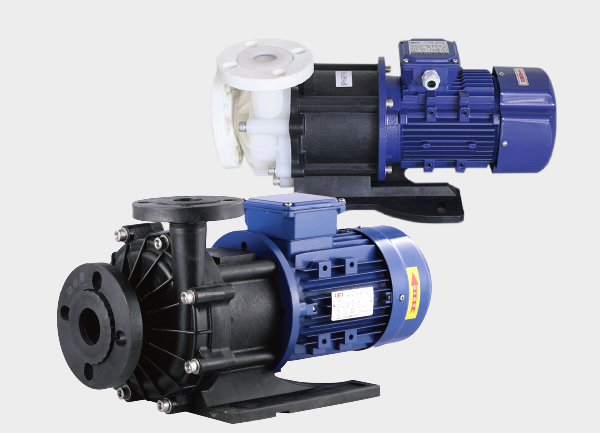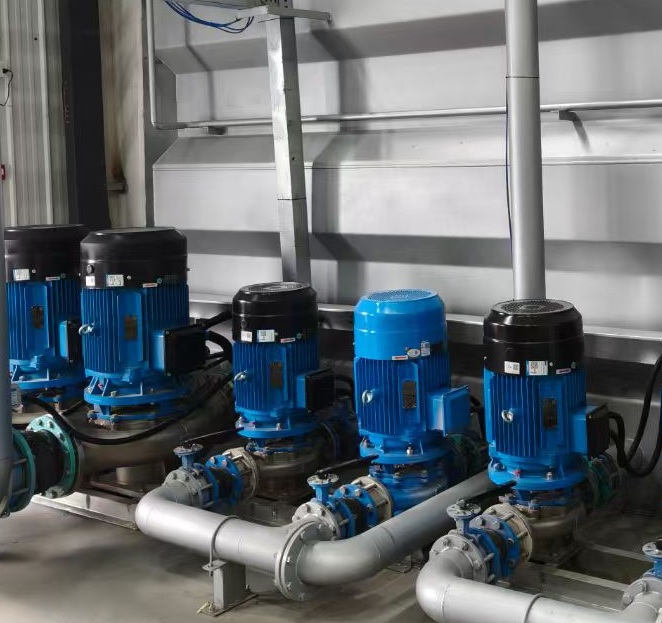Horizontal centrifugal pumps are among the most widely used types in the centrifugal pump family. Their core function is to transport fluids via centrifugal force, featuring stable structure, easy maintenance, and a wide range of flow rate and head adaptability. They are extensively applied in industries, municipal engineering, agriculture, and other fields. Below is a detailed analysis of their working principle and application scenarios.
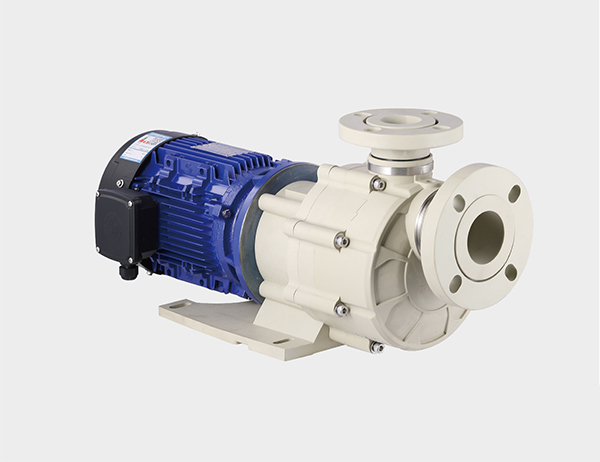
I. Working Principle of Horizontal Centrifugal Pumps
The operation of a horizontal centrifugal pump essentially involves energy conversion—converting the mechanical energy of a motor into the kinetic energy and static pressure energy of the fluid, ultimately achieving directional fluid transport. Its complete working process can be divided into three parts: pre-start preparation, core operation process, and key component coordination.
1. Pre-Start Preparation: Pump Priming & Air Discharge to Avoid “Air Binding”
Before starting a horizontal centrifugal pump, it is mandatory to prime the pump (fill the pump casing and suction pipeline with the fluid to be transported) and discharge internal air. This is a prerequisite for normal pump operation, for the following reasons:
- The density of air is much lower than that of fluids (approximately 1/800 of water). If air remains in the pump, the centrifugal force generated by the rotating impeller on the air is extremely small, failing to form a sufficient “low-pressure zone” at the center of the impeller.
- The fluid in the suction tank (e.g., water tank, pool) cannot be drawn into the pump under atmospheric pressure, causing the pump to “run dry” without fluid transport. This phenomenon is called air binding, which can lead to impeller overheating and shaft seal damage if prolonged.
2. Core Operation Process: Driven by Centrifugal Force for Energy Conversion
After pump priming, start the motor. The core operation process of the pump is as follows:
- Power Transmission: The motor drives the pump shaft to rotate via a coupling, and the pump shaft further drives the impeller (the core rotating component of the centrifugal pump) to spin at high speed (usually 1450 r/min or 2900 r/min).
- Centrifugal Force Action: As the impeller rotates, the fluid between its blades rotates with the impeller. Under the effect of centrifugal force, the fluid is “thrown” toward the edge of the impeller, significantly increasing the fluid’s kinetic energy (velocity) and static pressure energy (pressure).
- Energy Conversion: The fluid thrown to the edge of the impeller enters the pump casing (also known as the “volute”)—the channel of the pump casing gradually widens and spirals around the impeller, serving two key purposes:
- Flow Guidance: Collect the fluid thrown by the impeller smoothly and guide it to the discharge pipeline.
- Energy Conversion: The fluid’s flow velocity decreases in the gradually widening channel. According to Bernoulli’s Principle, part of the kinetic energy is converted into static pressure energy, allowing the fluid to be transported to the discharge pipeline at high pressure.
- Continuous Transport: As the impeller rotates continuously, the fluid at the center of the impeller is constantly thrown to the edge, maintaining a low-pressure zone at the impeller center. The fluid in the suction tank is continuously drawn into the impeller center through the suction pipeline under atmospheric pressure, forming a continuous cycle of “suction-transport-discharge”.
3. Key Components & Their Functions
The core function of a horizontal centrifugal pump relies on the coordination of various components. The key components and their roles are shown in the table below:
| Component Name | Core Function | Design Key Points |
|---|---|---|
| Impeller | Generates centrifugal force to directly impart kinetic energy to the fluid | The number of blades (usually 6-12) and shape (backward-curved blades are dominant for high efficiency) are designed based on flow rate/head requirements. |
| Pump Casing (Volute) | Collects fluid, guides flow, and converts kinetic energy into static pressure energy | Smooth inner wall, gradually changing channel (to avoid fluid turbulence losses), and material matching the transported medium (e.g., stainless steel for corrosion resistance). |
| Shaft Sealing Device | Prevents high-pressure fluid in the pump casing from leaking along the pump shaft and stops air from entering | Common types: Mechanical seal (good sealing performance, suitable for high-pressure/corrosive fluids); Packing seal (low cost, suitable for clean water). |
| Bearings | Supports the pump shaft and reduces frictional resistance during shaft rotation | Usually rolling bearings, requiring regular lubrication (grease or lubricating oil) to ensure stable high-speed rotation. |
| Suction Chamber/Discharge Chamber | Suction Chamber: Guides fluid from the suction pipeline to the impeller smoothly to reduce impact losses; Discharge Chamber: Guides fluid from the pump casing to the discharge pipeline. | Integrated design with the pump casing, smooth flow channel, and no local eddy currents. |
II. Application Analysis of Horizontal Centrifugal Pumps
Horizontal centrifugal pumps are used in various fields, mainly due to their strong structural adaptability (material can be adjusted according to medium characteristics), stable operation (low failure rate), easy maintenance (horizontal installation facilitates disassembly and overhaul), and wide parameter range (flow rate from several m³/h to thousands of m³/h, head from several meters to hundreds of meters). The following is a detailed analysis by field:
1. Industrial Field: Process Transport & Circulation
Industry is the core application scenario for horizontal centrifugal pumps, which need to meet the requirements of “diversified media”, “high reliability”, and “adaptation to complex working conditions”. Specific scenarios are as follows:
| Sub-Industry | Application Scenarios | Adaptation Reasons |
|---|---|---|
| Chemical Industry | Process transport of acid-base solutions, organic solvents, and viscous fluids (e.g., resins, coatings); Reactor feeding/discharging. | Customizable corrosion-resistant materials (e.g., 304/316 stainless steel, fluoroplastics) to withstand acid-base corrosion; Impeller design can adapt to fluids of different viscosities to avoid blockage. |
| Power Industry | Circulating water system in thermal power plants (transporting cooling water to cool steam turbines); Boiler feed water (low-pressure feed water stage). | High flow rate (single pump flow rate up to 1000 m³/h or more) to meet unit cooling needs; High operating efficiency (energy-saving) and strong continuous operation stability (power systems require 24/7 operation). |
| Metallurgical Industry | Cooling water system in steel plants (cooling blast furnaces and converters); Transport of rolling process lubricants; Transport of electrolyte in non-ferrous metal smelting. | Wear-resistant materials (to handle impurities in cooling water), adaptability to high-temperature fluids (some models can withstand temperatures above 150℃), and robust structure to adapt to vibration in industrial workshops. |
2. Municipal Public Utilities Field: Water Supply & Drainage
Municipal scenarios have high requirements for “large flow rate”, “low noise”, and “easy installation” of centrifugal pumps, and the structural characteristics of horizontal centrifugal pumps are perfectly suited:
- Urban Water Supply:
- Scenarios: Water intake from water sources (reservoirs, rivers) by water treatment plants, transport to urban water supply networks after treatment; Secondary water supply (for old communities or mid-to-high-rise buildings to make up for insufficient pressure in municipal pipelines).
- Adaptation Reasons: Large flow rate to meet water supply needs of residential areas; Horizontal installation allows direct placement in ground pump rooms (no deep foundation pit required, reducing construction costs); Low operating noise (meeting environmental requirements in municipal areas).
- Municipal Drainage & Sewage Treatment:
- Scenarios: Urban rainwater pumping stations (rapid waterlogging drainage in rainy seasons), sewage lifting pumping stations (transporting pipe network sewage to sewage treatment plants); Process links in sewage treatment plants (inlet water for aeration tanks, outlet water for sedimentation tanks, transport of sludge concentrate).
- Adaptation Reasons: Configurable “non-clogging impellers” (to handle fibers and impurities in sewage and avoid blockage); Flexible flow rate adjustment (frequency converters can be used to adapt to flow changes in rainy/dry seasons); Easy maintenance (facilitating impeller and shaft seal cleaning).
3. Agricultural & Water Conservancy Field: Irrigation & Water Lifting
Agricultural scenarios require centrifugal pumps to have “large flow rate, low head, and outdoor environment resistance”, which horizontal centrifugal pumps can efficiently meet:
- Farmland Irrigation:
- Scenarios: Water transport irrigation for large-area farmland (e.g., paddy fields, wheat fields); Water supply for drip irrigation/spray irrigation systems in greenhouses.
- Adaptation Reasons: Large flow rate and low head design (meeting the “short-distance, large-water-volume” needs of irrigation and saving electricity); Outdoor protection treatment (e.g., rain covers, anti-corrosion coatings to withstand wind and rain); Simple operation (no professional maintenance required).
- Water Conservancy & Water Lifting:
- Scenarios: Water diversion from rivers/reservoirs to farmland; “Human and livestock drinking water projects” in arid areas (transporting groundwater or surface water to village reservoirs).
- Adaptation Reasons: Strong anti-cavitation performance (some models can be equipped with “inducers” to avoid cavitation caused by water level fluctuations in water sources); Reliable operation (capable of continuous long-term work to meet the timeliness requirements of agricultural irrigation).
4. Construction & Civil Field: Secondary Water Supply & Circulation
Construction scenarios require adaptation to “space constraints” and “pressure requirements”, and horizontal centrifugal pumps have obvious flexibility advantages:
- Secondary Water Supply for High-Rise Buildings:
- Scenarios: High-rise buildings with 10 or more floors (municipal pipeline pressure usually only meets the needs of floors 1-6); Horizontal centrifugal pumps are connected in series/parallel to increase water pressure and transport to high-rise users.
- Adaptation Reasons: Can form a “constant pressure water supply system” with pressure stabilizing tanks and frequency converters (ensuring stable water pressure for high floors and avoiding fluctuations); Moderate volume (can be installed in building basements or rooftop machine rooms).
- Building Fire Protection & Air Conditioning Circulation:
- Scenarios: Building fire protection systems (pressure-stabilized water supply for fire hydrant systems and automatic sprinkler systems, meeting the fire code requirement of “start-up within 30 seconds”); Central air conditioning circulation water in commercial complexes and hotels (transporting cooling/chilled water to maintain indoor temperature).
- Adaptation Reasons: High operation reliability (fire protection systems require “no failure in emergency”); Adaptability to high-temperature media (air conditioning circulation water temperature is usually 10-50℃, and pump body materials can withstand this range); Low noise (meeting environmental requirements in commercial/civil areas).
III. Application Precautions (Improving Adaptability & Service Life)
To ensure efficient and stable operation of horizontal centrifugal pumps in different scenarios, the following key precautions should be noted:
- Medium Adaptation: Select pump materials based on the characteristics of the transported fluid—cast iron pumps for clean water, 304 stainless steel pumps for food/pharmaceutical applications, 316 stainless steel or fluoroplastic pumps for chemical acids and alkalis, and “wide-channel impellers” for viscous fluids (e.g., crude oil).
- Installation Specifications: The pump shaft must remain horizontal (to avoid uneven stress on bearings leading to wear); the suction pipeline should be short and straight (to reduce resistance and avoid air binding); independent supports should be installed for inlet and outlet pipelines (to prevent the pump body from bearing the weight of the pipelines).
- Operation & Maintenance: Never run the pump dry (dry running for more than 1 minute may burn the impeller and shaft seal); regularly check the sealing performance of the shaft seal (replace sealing parts promptly if leakage is found); lubricate the bearings every 3-6 months (adjust based on usage frequency); and clean the impeller regularly (to avoid flow reduction caused by impurity accumulation).
IV. Conclusion
The core advantage of horizontal centrifugal pumps lies in “energy conversion driven by centrifugal force”. Through the coordination of components such as the impeller and pump casing, they achieve efficient fluid transport. Their characteristics of stable structure, easy maintenance, and wide parameter range make them “universal fluid transport equipment” in industries, municipal engineering, agriculture, and construction. In practical applications, it is necessary to select suitable models based on three core factors—medium characteristics, flow rate/head requirements, and installation environment—while ensuring standardized installation and regular maintenance to maximize their efficiency and service life.



